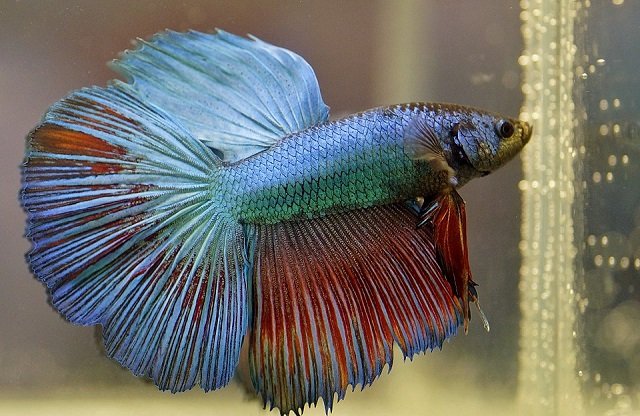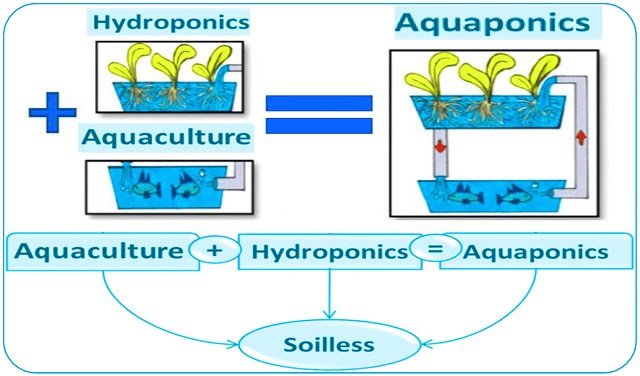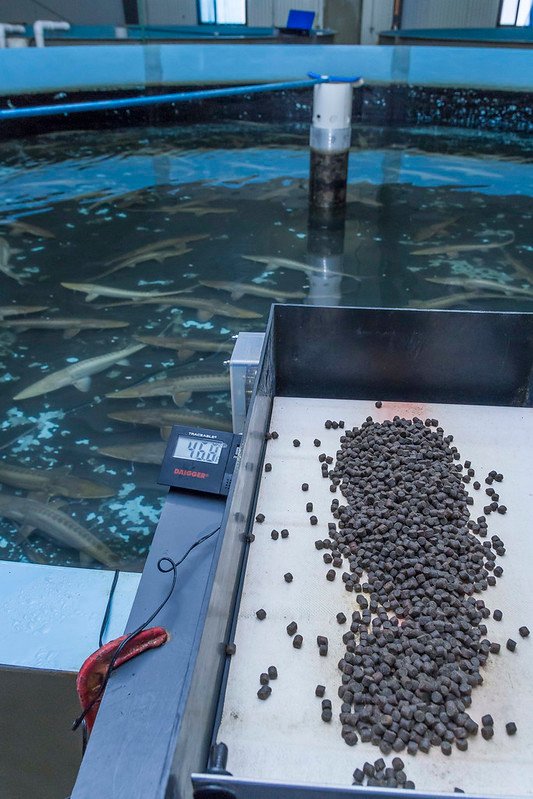
Recirculating Aquaculture Systems (RAS) represent a fundamental pillar of sustainable fish farming, as they offer controlled environments and significantly lower water consumption compared to traditional methods. However, efficiently managing these complex systems, particularly optimizing feeding rates and maintaining impeccable water quality, remains a major challenge.
Achieving the right balance is crucial: underfeeding slows growth, while overfeeding wastes resources and degrades water quality, potentially harming fish health.
Traditional feeding methods are often insufficient as they lack the adaptability needed to respond to the dynamic needs of fish and the complex interaction between feeding and water parameters such as dissolved oxygen (DO), pH, and ammonia.
Now, a pioneering study developed by researchers from Kafrelsheikh University, Omar Al Mukhtar University, Universitat Politècnica de València (UPV), Tutankhamun Research School for Artificial Intelligence (TRSAI), University of Miskolc, Damietta University, Taif University, and Aswan University presents a novel approach using advanced Artificial Intelligence (AI), specifically a Deep Deterministic Policy Gradient (DDPG) reinforcement learning algorithm, to address the challenge of feed optimization in RAS.
The DDPG Controller for Smarter RAS Management
This research introduces a sophisticated DDPG-based control system designed to simultaneously optimize feeding rates and manage critical water quality parameters in RAS. Unlike previous AI applications in aquaculture, which often focused on individual parameters, this system adopts a holistic approach.
How it Works:
- Integrated Control: The system integrates feed optimization with comprehensive water quality management (DO, pH, temperature, ammonia, nitrite, nitrate).
- Deep Learning Core: It employs a DDPG algorithm, a type of reinforcement learning ideal for continuous control tasks like adjusting feeding rates. This involves “actor” and “critic” neural networks that learn the optimal feeding policy through experience.
- Intelligent Reward System: A unique reward function guides the AI, balancing multiple objectives: maximizing fish growth, ensuring efficient feed use, maintaining water quality stability, and promoting smooth operational transitions.
- Adaptive Learning: The system learns and adapts to changing conditions, including fish growth stages, biomass, and environmental fluctuations.
DDPG Outperforms Traditional Methods
The study rigorously compared the DDPG controller with common methods such as Model Predictive Control (MPC), Proportional-Integral-Derivative (PID) control, and simple Bang-Bang controllers under various conditions. The results were compelling:
- Superior Accuracy: The DDPG controller demonstrated significantly higher accuracy in tracking desired growth trajectories, achieving a root mean square error (RMSE) 25.1% lower than MPC.
- Reduced Feed Consumption: Demonstrating remarkable resource efficiency, the DDPG method used 77.9% less feed compared to the Bang-Bang method.
- Greater Stability: Operational stability significantly improved, with a stability index 17.9% higher than PID control. Water quality parameters such as dissolved oxygen (DO), pH, and ammonia remained within optimal ranges for over 96% of the time.
- Faster Recovery: The system recovered much faster from environmental disturbances (such as temperature changes, DO drops, or ammonia spikes), with recovery times 22% to 64% faster than other methods.
- Improved Feed Conversion: Long-term tests showed a 15.5% improvement in the feed conversion ratio (FCR) compared to MPC.
Robustness, Scalability, and Economic Advantages
Beyond basic performance, the DDPG system demonstrated practical feasibility:
Stay Always Informed
Join our communities to instantly receive the most important news, reports, and analysis from the aquaculture industry.
- Robustness: It showed resilience against sensor failures (drifts, errors), environmental disturbances (temperature spikes, ammonia stress), network issues (delays, packet loss), and even hardware limitations.
- Scalability: The controller consistently performed well across different system scales, from small 1000 L research facilities to large 50,000 L commercial-scale simulations. Its architecture is designed for large installations.
- Computational Efficiency: The system is computationally viable and can effectively run even on low-resource hardware such as a Raspberry Pi 4B, making it accessible for real-world implementation.
- Economic Benefits: The improvements translate into significant cost savings. The study reported a 31.5% reduction in total operating costs (feed, energy, maintenance) compared to the Bang-Bang control system. Cost-benefit analysis at different scales showed substantial net annual benefits (ranging from $12,000 for small-scale systems to $466,000 for large-scale systems) and attractive return on investment (ROI) figures (85-238% based on conservative estimates), with potential payback periods of less than a year for larger systems.
Conclusion
This DDPG-based system represents a significant advancement in the intelligent management of recirculating aquaculture systems. By effectively optimizing feeding and ensuring stable water quality, it enhances efficiency, reduces costs, and improves the sustainability of RAS operations.
While researchers plan further studies to refine control mechanisms, explore multi-species adaptability, and integrate advanced sensors, this study firmly establishes the potential of deep reinforcement learning to revolutionize commercial aquaculture.
Open access funding was provided by the University of Miskolc, while the research was funded by Taif University.
Contact
Mohamed Hamdy Eid
Institute of Environmental Management, Faculty of Earth Science, University of Miskolc
Miskolc- Egyetemváros, 3515, Hungary
Geology Department, Faculty of Science, Beni-Suef University
Beni-Suef, 65211, Egypt
Email: Mohamed.hemida@uni-miskolc.hu
Reference (open access)
Elmessery, W.M., Abdallah, S.E., Oraiath, A.A.T. et al. A deep deterministic policy gradient approach for optimizing feeding rates and water quality management in recirculating aquaculture systems. Aquacult Int 33, 253 (2025). https://doi.org/10.1007/s10499-025-01914-z
Editor at the digital magazine AquaHoy. He holds a degree in Aquaculture Biology from the National University of Santa (UNS) and a Master’s degree in Science and Innovation Management from the Polytechnic University of Valencia, with postgraduate diplomas in Business Innovation and Innovation Management. He possesses extensive experience in the aquaculture and fisheries sector, having led the Fisheries Innovation Unit of the National Program for Innovation in Fisheries and Aquaculture (PNIPA). He has served as a senior consultant in technology watch, an innovation project formulator and advisor, and a lecturer at UNS. He is a member of the Peruvian College of Biologists and was recognized by the World Aquaculture Society (WAS) in 2016 for his contribution to aquaculture.




